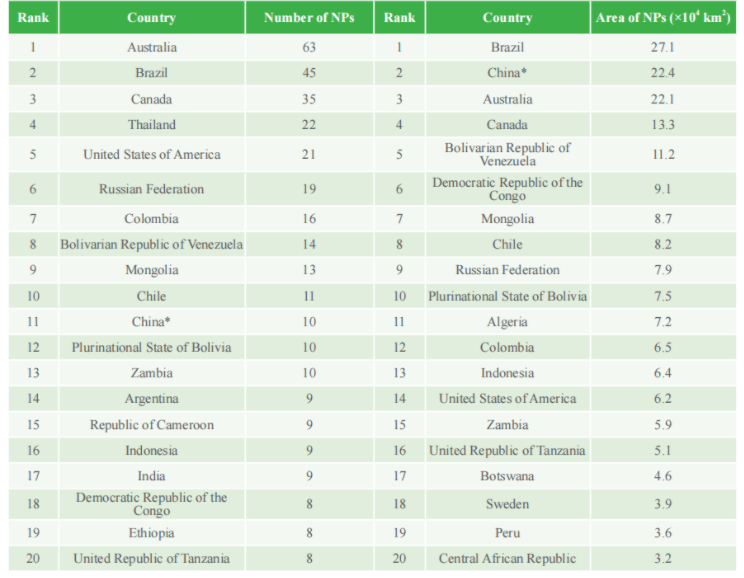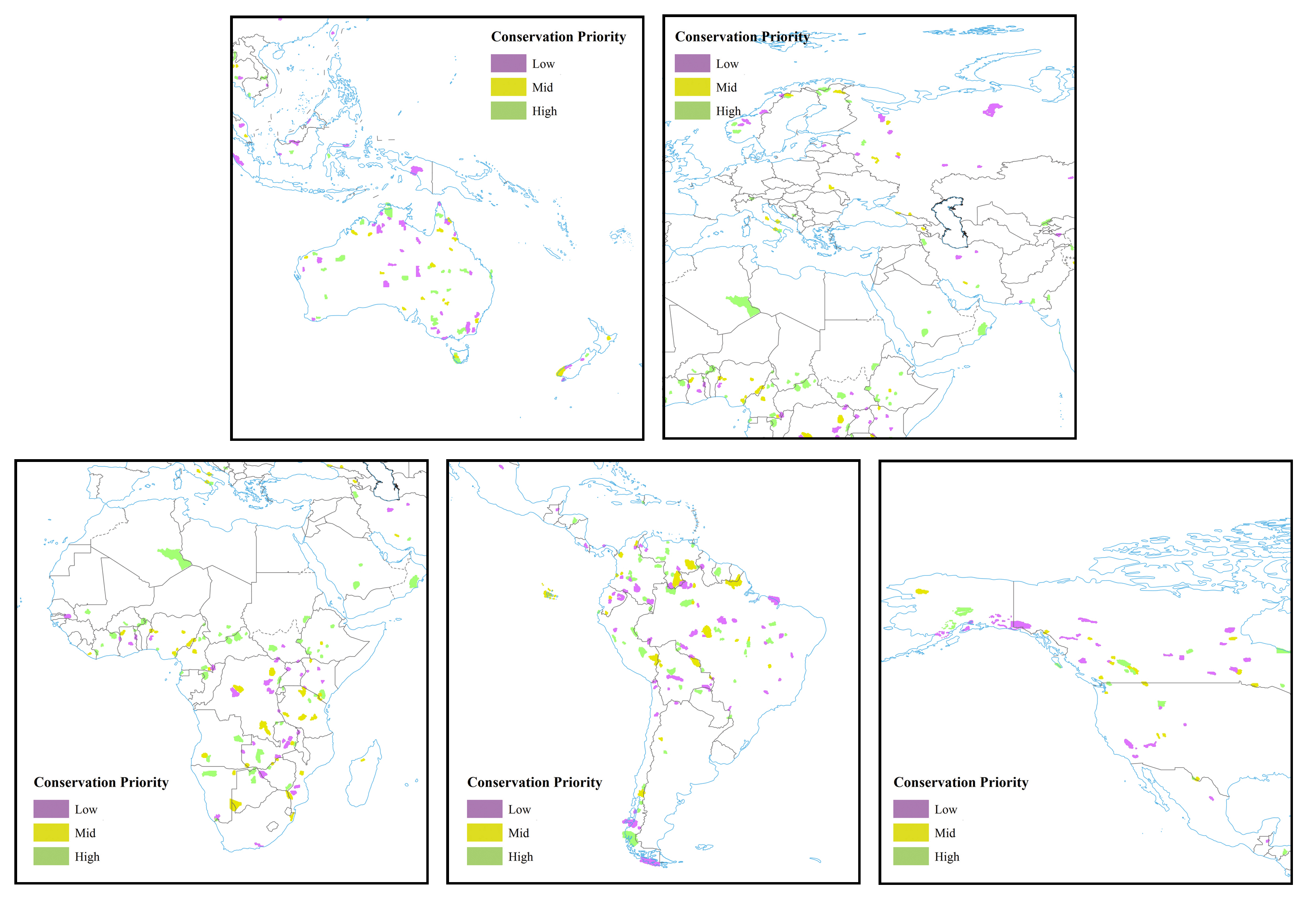SDG15: Life on Land
Assessment of conservation priority for global national parks(2019)
Scale: Global
Study area: Global
A total of 217,834 protected areas have been established throughout the world since the establishment of the world's first national park in the United States in 1872. These protected areas cover a total area of 5.5x107 km2, and account for about 12% of Earth's land surface. National park is the most important category of protected areas. Globally, there are 5,517 national parks with an area of 3.3^106 km2. National parks represent both 3% of the number of all protected areas and 6% of the total area for all protected areas.
In 2013, the Third Plenary Session of the 18th Central Committee of China's Communist Party proposed to establish a system of national parks, which has now become a national priority. The Chinese government has constructed 10 pilot national parks across 12 provinces with a total area of about 220,000 km2, including Sanjiangyuan, Giant Panda, Tiger and Leopard, Shennongjia, Qianjiangyuan, Nanshan, Wuyishan, the Great Wall, Pudacuo, and Qilian Mountain.
A quantitative monitoring and evaluation mechanism for protected areas can provide an important assessment for the government to improve conservation efforts and scientific management. This assessment requires quantifying multiple parameters related to the protected area's status, pressure, and feedback, and requires quantifying their interrelationships. Such assessments aid in refining priorities and policies to improve the management and conservation of protected areas. This report evaluates the conservation priorities of the top 500 national parks to summarize best-practice national park management experiences.
Target 15.1: By 2020, ensure the conservation, restoration, and sustainable use of terrestrial and inland freshwater ecosystems and their services. This includes forests, wetlands, mountains, and drylands, and is in line with obligations under international agreements.
Indicator 15.1.2: The proportion of important sites and ecosystems for terrestrial and freshwater biodiversity that are covered by protected areas.
Method
This report integrates global protected area, remote sensing, population, lighting, and road data and uses the pressurestate-feedback model to quantify the conservation priority for protected areas based on the SDG 15.1.2 indicator. The report involves an assessment of the conservation priority for the top 500 national parks. The case uses the “priority conservation index” as the conservation priority measure to facilitate comparison between different regions. The conservation priority is defined using the stress status and feedback indicators.
Data used in this case
The remote sensing data and related products used in this report include global land cover products (GlobCover2009), global nighttime light index products (DMSP-OLS), World Database of Protected Areas (WDPApol2018), global road distribution data (gROADSv1, 1980-2010), global population density grid data (GPWv4), global distribution of poverty, global annual PM2.5 grids (2009-2011), and a map of national park system pilots in China.
Results and Analysis
The top 500 national parks have a total area of 1.3×l06 km2, and account for 40.4% of the total global national park area. These national parks are located in 82 countries. About 60% of the national parks are in South America and Africa, 34% are in Asia, Oceania, and North America, and 6% are in Europe.
The landscape types within these national parks include broadleaved forests (81.9x×104 km2), coniferous forests (14.5×104 km2), mixed coniferous and broadleaved forests (5.1×104 km2), shrubs (36.9×104 km2), grasslands (33.1×104 km2), wetlands (4.3×104 km2), farmlands (2.5×104 km2), and other vegetation (12.2×104 km2). The landscape also includes water bodies (7.5×104 km2), permanent ice and snow cover (8×104 km2), bare lands (23.4×104 km2) and construction land (0.03×104 km2).
Table 1. Top 20 countries with the largest number and area of national parks

Note: Calculated by Category Ⅱ (National Park) of IUCN. * Chinese national park system pilots.
The top 500 national parks with the highest conservation priority covered an area of 91.7×104 km2, and accounted for 68.8% of the total area. Africa was observed to have the most high- priority national parks, representing 44.7% of the total number.
Conversely, North America had the least amount of high- protection priority national parks, accounting for 30.6% of the total number.


Figure 1. Global national parks ranked by conservation prioritization.
| Highlights |
| The top 500 national parks accounted for 40% of the world's total national park area, and 70% of these parks had a high conservation priority. Although the construction of national parks started late, China has paid more attention to top-level design, standardized construction, and implemented the strictest protection. There is an urgent need to use Big Earth Data methodology to strengthen the monitoring, evaluation, and management of global national parks. |
Outlook
Globally, protected areas have experienced downgrading, downsizing, and degazettement. The establishment, monitoring, evaluation, and management standards of national parks are not consistent due to different political systems, cultures, economic and social development, and the scientific and technological development of different countries. The methodology presented The Big Earth Data methodology can be applied to monitor, evaluate, and manage national parks around the world. The Big Earth Data information and assessment indicators will be strengthened in the future. Furthermore, the application of Earth observation technology for the assessment of SDG 15.1.2 will be improved to serve global sustainable development in this case can aid in simplifying the process.

